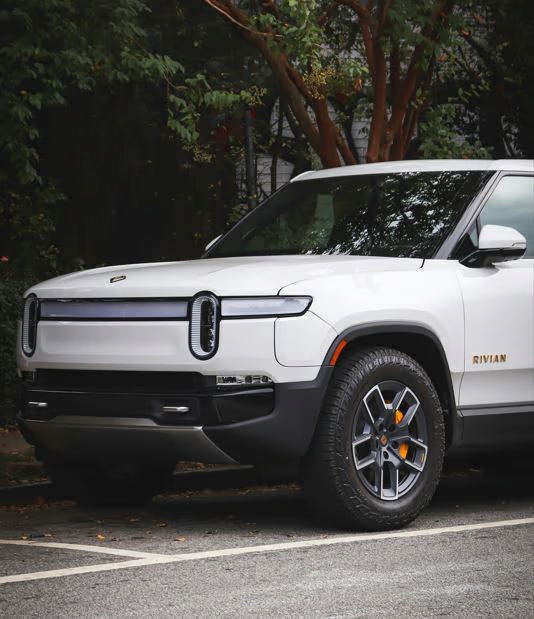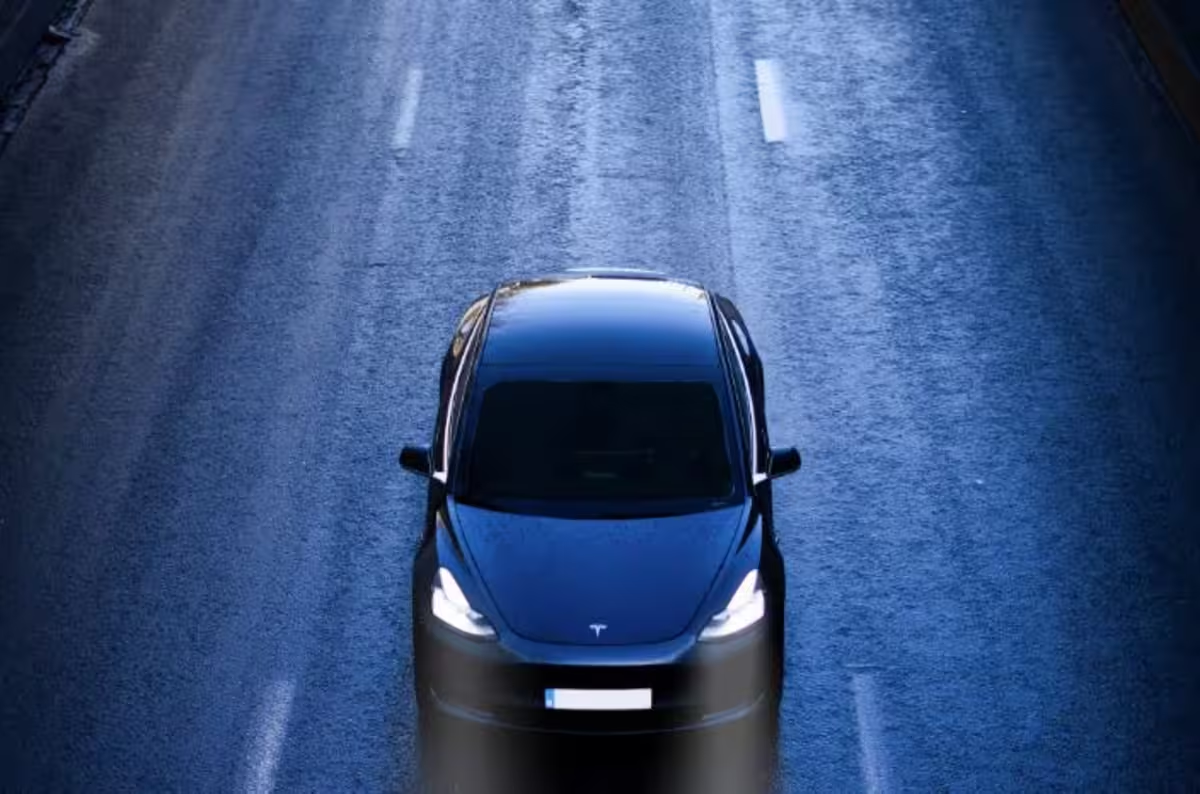Rivian 2025: Electric SUVs with Innovative Technology
Short intro to Rivian
Anyone who works directly or indirectly in the automotive field has heard of Rivian—they are making headlines and climbing their way to claiming the 'best electric truck and SUV' spot. Rivian’s latest models, the R1S and R1T, have garnered significant attention, with the R1S review praising its position among the best electric SUVs and positioned to continue in 2025. The R1T’s impressive towing capacity, innovative Skateboards and battery range further solidify the brand’s reputation. Rivian’s innovations don’t stop there—they’ve introduced the Rivian Autonomy Platform, enhancing the driving experience with advanced technology.
In order to understand Rivian's success, it is vital to dive deeper into what they do best: What is the Rivian Skateboard? What is the Rivian Software Stack and what makes it special? How does it compare with competitors such as the Tesla Cybertruck? We will address all of these, so keep on reading.
What is the Rivian Skateboard?
Rivian’s second-generation R1T and R1S models, released this year, are built on their innovative "Skateboard" platform. It's a game-changing piece of engineering that integrates the battery pack, electric motors, suspension, and chassis into one seamless structure. This platform is the backbone of all Rivian vehicles, making it incredibly versatile, whether you’re talking about their rugged pickup trucks, adventure-ready SUVs, or hard-working commercial vans.
Tri-Motor and Quad-Motor Powerhouses
The newer models have introduced a new tri-motor powertrain option, adding to the existing dual and quad-motor configurations. The quad-motor setup is now more powerful than ever, delivering a whopping 1,028 horsepower and 1,198 lb-ft of torque. This gives the R1T the muscle to tow up to 11,000 lbs, while the R1S can handle 7,700 lbs with ease. These numbers aren’t just for show—they translate into real-world capability, making Rivian vehicles perfect for tackling tough terrains and heavy-duty tasks alike. It’s fair to say Rivian is setting new benchmarks in the EV market with these powerhouse machines.
Battery Tech: Range Meets Reliability
But it’s not just about power; Rivian has also made big strides in battery technology. Their in-house developed battery packs now range from 135 kWh to 165 kWh, giving the R1T and R1S an impressive range of up to 420 miles on a single charge. These batteries aren’t just about going the distance—they’re designed with high energy density and advanced cooling solutions, ensuring they perform under the harshest conditions. Rivian has also rolled out Lithium Iron Phosphate (LFP) batteries, known for their safety and longevity, further boosting the reliability of their vehicles.

What is Rivian's Software Stack?
The Rivian Autonomy Platform (RAP) got a major upgrade in 2024, pushing the boundaries of what their advanced driver-assistance systems (ADAS) can do. This new system, now ten times more powerful than before, is packed with 11 cameras, 5 radar sensors, and some seriously sophisticated AI. One cool feature? "Lane Change on Command," which makes highway driving smoother and safer by automatically changing lanes when you signal. It’s clear that Rivian is serious about blending performance with convenience.
How does Rivian offer Over-the-Air (OTA) Updates?
Rivian delivers very efficient and cost-effective over-the-air (OTA) updates through their software ecosystem, which includes a custom operating system and 41 electronic control units (ECUs), is designed to keep the vehicle’s behavior and performance at its best, dynamically adapting as new updates roll out. It’s like having a car that evolves with you. The setup of the E/E backend and infrastructure ensures that the regular updates are not very costly for Rivian, enabling an agile methodology of work in a field which is not known for being very flexible.

Manufacturing and Production: Scaling Up for Success
Rivian’s approach to manufacturing is as ambitious as their vehicles. Their 3.3 million square foot facility in Normal, Illinois, is the heart of their production strategy. This highly automated plant, equipped with advanced robotics, can crank out up to 150,000 vehicles annually, with plans to boost that number to 200,000 by the end of 2023. It’s a setup designed for efficiency and scalability, crucial for meeting the rising demand for EVs.
Expansion Plans: Building for the Future
And Rivian isn’t stopping there. To keep pace with demand, they’re expanding their production footprint both in the U.S. and abroad. They’ve already broken ground on a second U.S. factory in Georgia, set to go live in 2024 with a massive annual capacity of 400,000 units. On the international front, Rivian has teamed up with Mercedes-Benz to produce electric vans at a new facility in Central or Eastern Europe, marking their first big leap into the global market.
Rivian R1T vs. Cybertruck Comparison
To put things into perspective, let's look at a comprehensive (yet high-level) comparison of the flagship Rivian R1T with the Cybertruck. While both might not have exactly the same target customer, but it's essential in understanding the technical possibilities and offerings in this space.
This table offers a direct comparison of the most crucial features between the Rivian R1T and Tesla Cybertruck, helping buyers determine which vehicle best suits their needs. While the Cybertruck excels in towing capacity and futuristic design, the Rivian R1T offers superior off-road capabilities, a longer maximum range, and innovative storage solutions.
| Feature | Rivian R1T | Tesla Cybertruck |
|---|---|---|
| Design | Conventional, classic truck design | Futuristic, angular design with stainless steel exoskeleton |
| Towing Capacity | 11,000 pounds | 14,000 pounds |
| Payload Capacity | 1,760 pounds | 3,500 pounds |
| Ground Clearance | 14 inches (ideal for off-road) | Up to 16 inches (adjustable air suspension) |
| Unique Features | "Gear Tunnel" for extra storage; multiple lockable compartments | Durable stainless steel body; 6.5-foot bed |
| Range (Max) | Up to 420 miles | Up to 340 miles |
| Powertrain | Dual-motor, quad-motor options with up to 835 hp | Dual and tri-motor options with up to 800+ hp |
| Infotainment Display | 15.6-inch display | 18.5-inch front display; 9.4-inch rear display |
| Driver Assistance | "Driver+" system with off-road modes | Advanced Autopilot with Full-Self Driving capability |
| Price (Starting) | $73,000 (eligible for $7,500 tax credit) | $61,000 (base model) |
Strategic Partnerships and Market Position: Rivian’s Winning Formula
Rivian’s strategy isn’t just about what they build—it’s also about who they’re building with. Their partnership with Amazon is particularly noteworthy. Amazon, which owns a 20% stake in Rivian, has placed an order for 100,000 electric delivery vans, with a deadline of 2025. This deal, worth around $7 billion, highlights Rivian’s strong position in the commercial vehicle sector and provides a steady revenue stream as the company scales up production.
Commercial Vehicle Segment: Tailored for Business
The Rivian Commercial Van (RCV) shares many components with the R1 platform but is specifically designed for commercial use. It comes in various configurations to meet different operational needs, making it a versatile option for logistics and delivery companies. With its impressive range, ample storage, and advanced fleet management services like FleetOS and ADAS, the RCV is poised to be a game-changer in the growing market for sustainable transportation solutions.
Market Outlook and Financial Performance: Navigating the Challenges Ahead
While Rivian is on a promising trajectory, the road ahead is not without its challenges. Supply chain disruptions, macroeconomic pressures, and intensifying competition in the EV space are all hurdles that Rivian will need to overcome. However, analysts are optimistic, with a 12-month price target of $45 for Rivian’s stock, driven by expectations of strong revenue growth through 2025.
Risks and Opportunities: Staying Ahead of the Curve
The biggest risks for Rivian include potential delays in scaling up production, ongoing chip shortages, and the volatility of the EV market. But with its innovative technology, strong partnerships, and strategic expansion plans, Rivian is well-positioned to navigate these challenges. If they can continue to innovate and deliver, Rivian is likely to emerge as a leader in both the consumer and commercial EV markets.
The EV-Global Verdict: Are Rivians the best Electric Trucks going forward?
For the time being, the answer is yes.As we look ahead to 2025, Rivian's journey is shaping up to be a defining chapter in the electric vehicle industry. With the R1S and R1T leading the charge, backed by the robust Rivian battery range and skateboard, the company is poised to make a significant impact. Rivian’s Autonomy Platform and the strategic Amazon deal for electric delivery vans are further testaments to their innovative approach. The growing excitement around Rivian’s 2024/2025 stock prediction highlights their potential to dominate the market. Whether you’re comparing the best electric SUVs of 2024 or exploring the future of electric trucks, one thing is clear: Rivian is here to stay, leading the charge towards a greener future.



